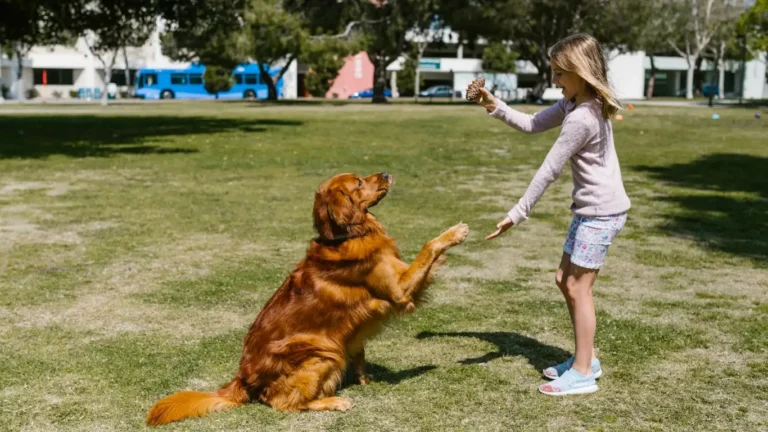How to Teach Your Dog to Stay Off Furniture Like a Pro
Teaching your dog to stay off the furniture can feel like a challenging task, but with a little patience, consistency, and the right techniques, it’s absolutely possible. As a Veterinary Technician with a specialization in Nutrition, I’ve seen firsthand how important it is to establish boundaries for your pet’s safety and well-being. Not only does it promote good behavior, but it also ensures your furniture stays free from dirt, hair, and potential damage. If you’re struggling with your furry friend’s furniture-hopping habits, you’re not alone! Let’s dive into how you can teach your dog to stay off the furniture using simple, effective, and humane techniques that will work for both you and your pet.
Understanding Why Dogs Love the Furniture
Before we jump into the methods for teaching your dog to stay off the furniture, it’s important to understand why dogs love to climb up on our sofas, beds, and chairs in the first place. You might think that they’re just being mischievous or rebellious, but there’s more to it than that!
- Comfort and Security: For many dogs, your couch or bed is the comfiest place in the house. It’s soft, cozy, and it smells like you! Dogs are social creatures and they love being close to their human family members. The furniture is often an extension of this, giving them a sense of comfort and security.
- Attention and Reinforcement: If you’ve ever caught your dog on the furniture and given them a little extra attention (even if it’s just saying, “No!”), they may have learned that jumping on the furniture gets them some form of interaction, whether positive or negative.
- Desire for Elevated Views: Dogs are naturally curious, and sitting on the furniture gives them a better vantage point to observe everything happening around them. From this elevated position, they can monitor activity in the house and keep an eye on you, which can be comforting for them.
How to Teach Your Dog to Stay Off the Furniture
Now that we have a better understanding of why your dog might be jumping on the furniture, let’s talk about how you can teach them to stay off it. As a Veterinary Technician, I’ve worked with a variety of dogs with different personalities, and I’ve seen what works (and what doesn’t) when it comes to behavior training. Here’s how to get started:
1. Establish Clear Boundaries
The first step in teaching your dog to stay off the furniture is to set clear, consistent boundaries. Dogs thrive on routine and structure, so it’s important to be firm but fair with your expectations. You can do this by:
- Designating Dog-Free Zones: Start by identifying which areas in your home you want your dog to avoid. For example, if you don’t want them on the couch, make that area a “no-dog zone.” You can use baby gates or keep doors closed to block access to these spaces.
- Creating a Comfortable Alternative: Dogs love to be comfy, so instead of simply saying “no” to the couch, offer them a comfortable alternative. A plush dog bed or a designated blanket on the floor will give them a spot of their own that feels just as cozy as your couch.
- Consistency is Key: Every time your dog tries to jump on the furniture, gently guide them off and lead them to their designated spot. Be consistent in your response. If you allow them on the couch sometimes and not others, they will get confused and learn that the rule is inconsistent.
2. Positive Reinforcement
When training your dog, positive reinforcement is one of the most powerful tools you can use. Instead of punishing your dog for getting on the furniture, reward them for staying off it. Dogs respond much better to rewards than to punishment, and this creates a more positive association with the desired behavior.
- Treats: Every time your dog chooses to lay on their own bed or stay off the couch, reward them with a treat. You can also use praise or a favorite toy as a reward.
- Clicker Training: If you’re familiar with clicker training, this can be a great way to mark the exact moment your dog stays off the furniture. The click sound acts as a “yes” marker, followed by a reward.
- Praise and Affection: Don’t underestimate the power of verbal praise and physical affection! Dogs thrive on attention from their humans, so giving them a pat or saying “Good boy/girl” can go a long way in reinforcing the desired behavior.
3. Redirect Their Attention
If your dog is repeatedly jumping on the furniture, it may be because they’re bored, anxious, or seeking attention. Redirecting their focus to an alternative activity can help them associate that action with something positive, instead of jumping on the furniture.
- Engage in Playtime: Dogs often jump on the furniture when they’re excited or need some stimulation. Try to redirect their attention by engaging them in a game of fetch or tug-of-war. This can help tire them out and reduce their desire to jump up on the furniture.
- Interactive Toys: Giving your dog an interactive toy, such as a puzzle feeder, can keep them entertained and mentally stimulated while keeping them off the furniture.

How to Make Training Effective
Training your dog to stay off the furniture requires consistency, patience, and a little creativity. While it might seem like a big task, breaking it down into manageable steps makes it much easier for both you and your dog. Here are a few tips to ensure your training process is successful:
1. Be Patient
Training takes time, and every dog is different. Some dogs will catch on quickly, while others may take longer. It’s important to stay patient and not get discouraged. The more you practice, the more likely your dog will learn and understand the boundaries you’re setting.
2. Be Firm, but Gentle
When your dog tries to jump on the furniture, be firm in your correction but never harsh. Gently guide them off and redirect them to their designated spot. Dogs are sensitive to tone and body language, so avoid using a harsh voice or physical punishment. Instead, stay calm and confident to help your dog understand what you want from them.
3. Involve the Whole Family
For training to be effective, everyone in your household needs to be on the same page. If your dog sees that one person allows them on the furniture while another doesn’t, it can create confusion and slow down the process. Make sure all family members are consistent in enforcing the same rules.

Addressing Common Challenges When Teaching a Dog to Stay Off the Furniture
While the steps I mentioned earlier can be incredibly effective, teaching your dog to stay off the furniture isn’t always smooth sailing. There are a few common challenges you might face along the way, but don’t worry—these are just bumps in the road that can be managed with the right approach. Let’s dive into some of these challenges and how to overcome them.
1. The Dog Doesn’t Respond to Redirection
One of the most frustrating issues you might encounter is when your dog simply doesn’t respond to redirection. This is especially common with puppies or high-energy dogs who are easily distracted. If your dog doesn’t seem to get the message, it might be because they’re too excited, overstimulated, or even a little anxious.
- Exercise and Mental Stimulation: Sometimes, a dog’s need for mental and physical exercise is what drives their desire to jump on the furniture. Regular play sessions and walks can help burn off excess energy. A tired dog is far less likely to engage in unwanted behaviors like furniture hopping.
- Shorter Training Sessions: Dogs can get overwhelmed if you train them for too long. Keep training sessions short and focused, ideally 5 to 10 minutes at a time. This will prevent frustration for both of you and help keep your dog engaged without losing focus.
- More Consistency: If your dog’s behavior isn’t improving, take a step back and evaluate your consistency. Are you reinforcing the rules every time? Inconsistent reinforcement will only confuse your dog and make the process take longer.
2. The Furniture Is Too Tempting
Sometimes, no matter what you do, your dog is just too attracted to the comfort of the couch, especially if it’s a spot they’ve claimed as their own. This is where it gets tricky, and it might require a little more patience and creative thinking to help your dog learn to stay off the furniture.
- Make the Furniture Less Appealing: One method that can help is making the furniture less comfortable for your dog. You could try placing a sheet or a blanket over the couch, or use a dog-specific deterrent like a pet-safe spray. Some people even use furniture covers that make the couch less inviting. The goal is to make the area less appealing without causing harm to your dog.
- Provide Extra Comfort Elsewhere: It might sound simple, but sometimes all your dog needs is a better option. If you haven’t already, try introducing a super comfy bed or blanket in an area your dog loves to hang out in. This can help them see that their own spot is just as comfy (if not better!) than the furniture.
3. Reinforcing the Behavior by Accident
If your dog is particularly persistent about getting on the furniture, it’s easy to unintentionally reinforce the behavior. Think about it: Have you ever let them on the couch “just this once” because they looked so cute, or because it was easier in the moment? While it’s natural to want to snuggle up with your furry friend, these moments can undo all of your hard work.
- Don’t Reward the Wrong Behavior: Even if your dog is giving you those puppy eyes, avoid rewarding them for getting on the furniture. If you allow them up for even a short time, they’ll think it’s okay to do it more often. Stick to the rule that the couch is off-limits—consistency is the name of the game!
- Be Mindful of Mixed Signals: Sometimes, well-meaning guests or family members might give your dog mixed signals by letting them on the furniture. It’s important to communicate your rules clearly to everyone in your household to avoid confusion for your dog. Everyone should be on the same page when it comes to reinforcing your dog’s training.

Using Crate Training to Your Advantage
Crate training can be an incredibly helpful tool when teaching your dog to stay off the furniture. Dogs naturally seek comfort and a sense of security, and a crate can serve as a safe, cozy space for your dog to relax when they can’t be on the couch. Here’s how you can incorporate crate training into your efforts:
1. Create a Positive Association with the Crate
For crate training to work, it’s essential that your dog sees the crate as a positive space, not a punishment. You want them to love going into their crate when they need some downtime.
- Make the Crate Cozy: Place a comfortable bed or blanket inside the crate and add some of your dog’s favorite toys. You can even put a piece of your clothing inside so they can smell you. The more comfortable the crate is, the more your dog will enjoy spending time in it.
- Gradually Increase Time Spent in the Crate: Start by introducing your dog to the crate in short intervals, making sure they’re calm and comfortable before gradually increasing the amount of time they spend there.
- Use Positive Reinforcement: Whenever your dog voluntarily enters the crate or stays in there without fuss, reward them with treats, praise, or even a quick play session. This helps build a positive association with the crate, making it less likely that they’ll want to jump on the furniture.
2. Use the Crate When You’re Not Around
If you’re away or unable to supervise your dog, it’s often best to use the crate to prevent them from jumping on the furniture when you’re not looking. This can help prevent them from reinforcing bad habits while you’re absent.
- Short-Term Use: If you need to leave the house for a few hours, crate your dog for their own safety, as well as to prevent them from jumping on the furniture when you’re not there to intervene.
- Long-Term Use: Over time, your dog will associate the crate with rest and relaxation, which can help reduce their urge to jump on the furniture when you’re not home.

Dealing with Older Dogs and Established Habits
If you’re trying to teach an older dog to stay off the furniture, you may face additional challenges. Older dogs often have well-established habits, and changing those habits can be harder than with younger dogs. However, it’s absolutely possible with a bit more patience and persistence.
1. Adjust Your Approach Based on Your Dog’s Age
Older dogs may not have the same energy or focus as younger dogs, but they can still learn! However, the process might take a bit longer. Here are a few ways to adjust your training:
- Gentle Redirection: If your dog is older, they may not respond as quickly to redirection. Be gentle and patient, guiding them calmly off the furniture and back to their designated spot.
- Slow and Steady: Older dogs may need slower, more gradual changes to their routine. Make the transition from furniture to designated spaces less abrupt to help them adjust at their own pace.
- Provide Extra Comfort: As dogs age, they can experience joint pain or discomfort. Make sure that your dog’s bed or designated spot is extra comfortable and supportive to help them feel cozy without jumping on the furniture.
2. Be Ready for Setbacks
Don’t be discouraged if you encounter setbacks, especially with an older dog. Sometimes, dogs revert to old behaviors when they’re feeling stressed or unwell. It’s important to stay calm and adjust your training accordingly. If needed, consult with your vet or a professional trainer for additional guidance.

Long-Term Success: Maintaining the Boundaries with Your Dog
Now that you’ve worked hard to teach your dog to stay off the furniture, the real challenge begins: maintaining the boundaries over time. It’s easy for your dog to slip back into old habits, especially if you become inconsistent or stop reinforcing the rules. But don’t worry, this part is all about keeping up with the training and ensuring your dog sticks to the new routine.
1. Keep Training Sessions Brief and Fun
As mentioned before, consistency is key. But here’s a little secret: keeping training sessions fun and brief is just as important. Dogs, especially those with short attention spans, can get bored or frustrated if you make the training process too long or monotonous. Keep your sessions engaging, around 5-10 minutes at a time, and always end on a positive note with praise or a treat. Over time, this short reinforcement can help solidify the new behavior without overwhelming your dog.
- Keep it Positive: Whether you’re reinforcing the “stay off the furniture” rule or teaching your dog something else, always stay upbeat. If you use a friendly tone and reward good behavior, your dog will remain eager to please. It also creates a positive association with training, making it something your dog looks forward to.
- Make It Part of Daily Life: Practice the “stay off the furniture” rule as part of your daily routine. This doesn’t always have to be a formal training session—it can just be an ongoing reminder. For example, if your dog tries to jump on the couch, kindly redirect them back to their bed and give them praise for making the right choice.
2. Maintain the Crate or Bed Training
Once your dog is trained, it’s important to continue using the crate or bed as their designated space. Don’t just stop using it, thinking they’ve “learned” to stay off the furniture. Instead, maintain consistency by reinforcing the use of their cozy bed or crate every day. Even if you feel like your dog has it all figured out, it helps keep their training fresh and reinforces the behavior you’ve worked so hard to establish.
- Provide Rewards for Staying in Their Space: Just because they’ve learned the behavior doesn’t mean the rewards should stop! Continue rewarding your dog with treats, praise, or playtime when they choose their designated spot over the couch.
- Introduce New Challenges: As your dog gets better at staying off the furniture, you can make things a bit more challenging. For instance, you could introduce new distractions, like leaving the room for a while, to see if they stay in their designated spot. This reinforces their commitment to staying off the furniture when you’re not watching.
3. Prevent Furniture Access When You’re Not Around
One effective way to ensure your dog doesn’t jump on the furniture when you’re not around is to block their access entirely. Even if your dog knows the rules, sometimes a little extra barrier can be a helpful reminder. Using baby gates, keeping doors closed, or putting up furniture covers can help reinforce the boundaries, especially when you’re not home to supervise.
- Baby Gates: Baby gates are great for creating boundaries within the house. They can help prevent your dog from accessing areas where the furniture is located, especially when you’re not able to watch them closely.
- Furniture Covers: As I mentioned before, some dogs are simply drawn to the softness of the couch or bed. A furniture cover can act as a physical deterrent. It’s not a long-term solution, but it can help keep them off while you’re transitioning them to more consistent behavior.

What to Do if Training Isn’t Working
If you’ve been trying to train your dog to stay off the furniture for a while and the results are less than expected, it’s important to assess what might be going wrong. Sometimes, training takes longer for some dogs than others, but it’s also possible that there’s an underlying issue you might need to address.
1. Consider Your Dog’s Health
As a Veterinary Technician, I’ve seen how a dog’s physical health can sometimes impact their behavior. If your dog seems particularly determined to get on the furniture, it might be worth checking in with your vet to rule out any physical discomfort or medical conditions. For example, if your dog is dealing with joint pain or arthritis, they might be seeking the furniture for extra comfort. In these cases, providing them with a more supportive bed or alternative might help.
- Joint Issues: Dogs with joint pain may seek the comfort of soft furniture. If this seems like a possibility, talk to your vet about joint supplements or a more orthopedic dog bed to offer relief.
- Separation Anxiety: Some dogs might jump on the furniture as a coping mechanism for anxiety, especially when left alone. If this is the case, consult your vet about behavior management strategies or anxiety treatments.
2. Seek Professional Help
If you’ve tried all of the above methods and still can’t get your dog to stay off the furniture, it might be time to consider professional help. A certified dog trainer or behaviorist can provide personalized guidance and support based on your dog’s specific needs.
- Positive Reinforcement Trainers: Trainers who specialize in positive reinforcement techniques can be incredibly helpful in reinforcing your dog’s new behavior while providing the necessary structure.
- Behavioral Specialists: In cases of more severe behavioral issues, a behavioral specialist can work with you and your dog to find the root cause of the problem and develop a plan for correcting it.

Disclaimer
The content provided in this article is based on my personal experience as a Veterinary Technician with a specialization in Nutrition, along with research from reputable sources. It is not meant to replace professional veterinary advice or behavior training services. If you have concerns about your dog’s behavior or health, I recommend consulting with a certified veterinarian or dog trainer to tailor the right approach for your pet’s unique needs.
For more information on dog training techniques, you can visit trusted resources such as AKC and PetMD.






